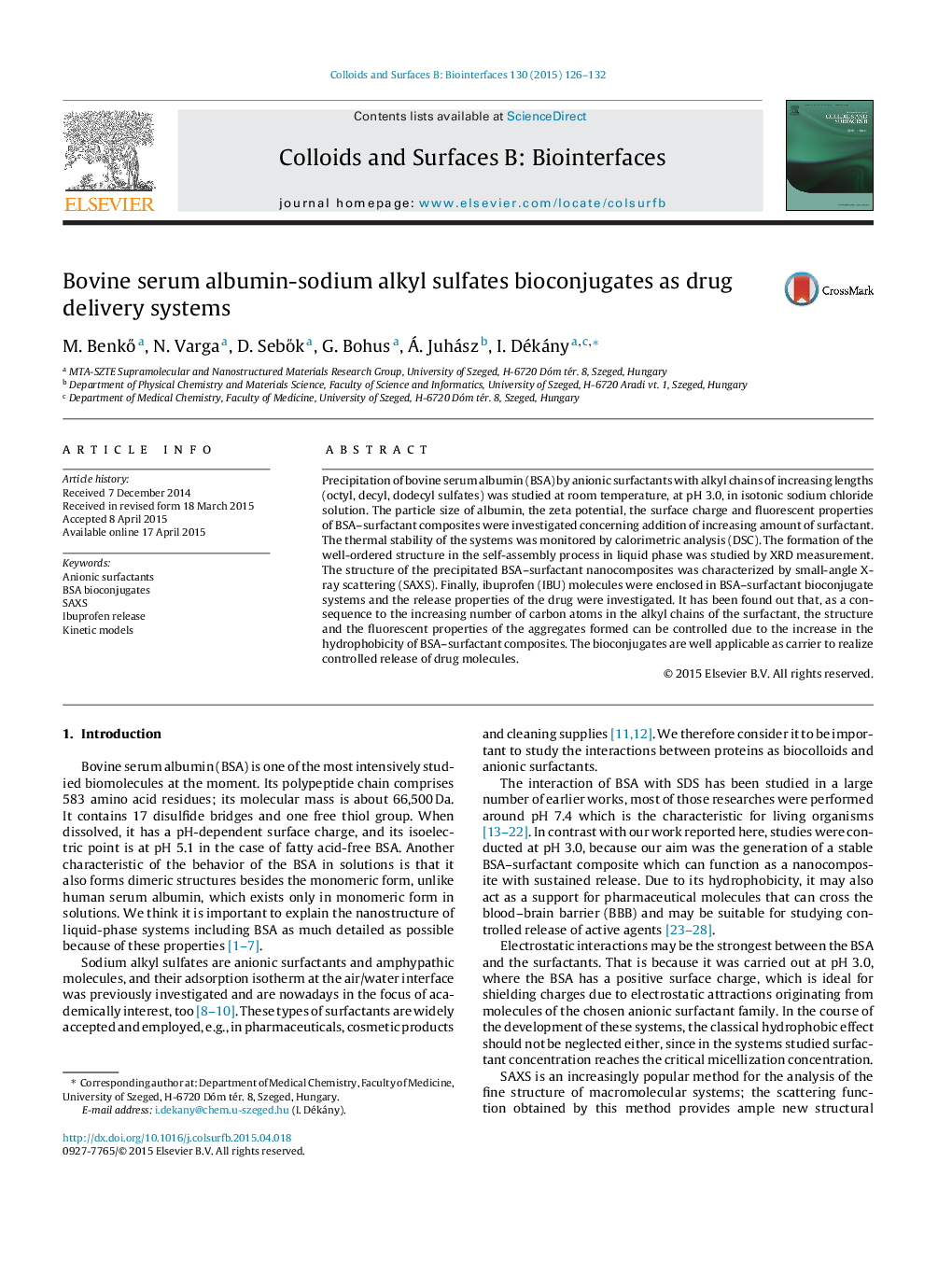| Article ID | Journal | Published Year | Pages | File Type |
|---|---|---|---|---|
| 599327 | Colloids and Surfaces B: Biointerfaces | 2015 | 7 Pages |
•Protein-surfactant bioconjugates provide an opportunity to enclose drug molecules.•The degree of the crystal structure of SDS decreased by adding BSA macromolecule.•The IBU stabilizes the crystal structure of the SDS in the BSA/SDS composites.•The release rate of the IBU can be well controlled with SDS and BSA/SDS mixture.
Precipitation of bovine serum albumin (BSA) by anionic surfactants with alkyl chains of increasing lengths (octyl, decyl, dodecyl sulfates) was studied at room temperature, at pH 3.0, in isotonic sodium chloride solution. The particle size of albumin, the zeta potential, the surface charge and fluorescent properties of BSA–surfactant composites were investigated concerning addition of increasing amount of surfactant. The thermal stability of the systems was monitored by calorimetric analysis (DSC). The formation of the well-ordered structure in the self-assembly process in liquid phase was studied by XRD measurement. The structure of the precipitated BSA–surfactant nanocomposites was characterized by small-angle X-ray scattering (SAXS). Finally, ibuprofen (IBU) molecules were enclosed in BSA–surfactant bioconjugate systems and the release properties of the drug were investigated. It has been found out that, as a consequence to the increasing number of carbon atoms in the alkyl chains of the surfactant, the structure and the fluorescent properties of the aggregates formed can be controlled due to the increase in the hydrophobicity of BSA–surfactant composites. The bioconjugates are well applicable as carrier to realize controlled release of drug molecules.
Graphical abstractFigure optionsDownload full-size imageDownload as PowerPoint slide
